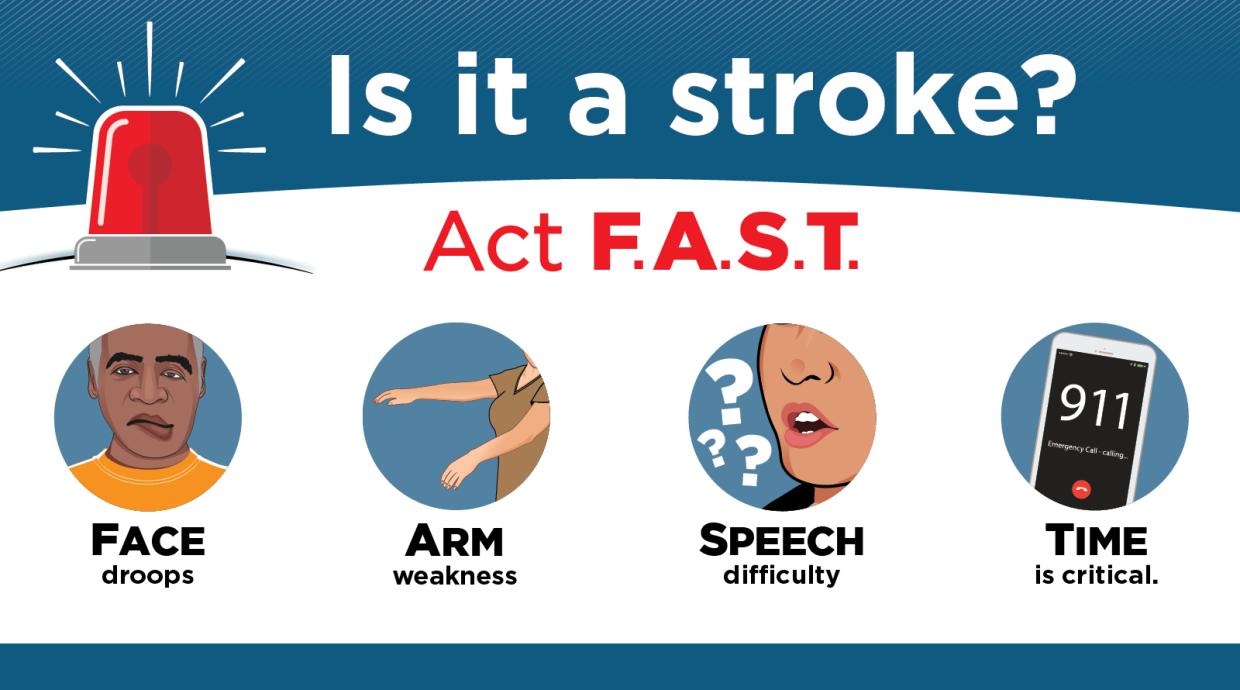A Stroke of Genius: Recognize the Symptoms & Know What To Do
It’s the talk we all hate to have. We wish that it didn’t have to occur. But it can’t be taught in school. It is better coming from a loved one. The Dreaded S-talk. Not Sex (that can be covered in the classroom and by the internet). I’m talking about the Stroke talk.
A stroke is a sudden loss of brain function; caused by the interruption of blood flow to the brain (ischemic) or the rupture of blood vessels in the brain (hemorrhagic). The interruption of blood flow or the rupture of blood vessels causes brain cells in the affected area to die. Your brain is the most complex organ in your body. It consists of more than 100 billion specialized nerve cells called neurons, and it acts as a command centre for everything you do, think, sense and say. These neurons cannot regrow themselves, so once they die, they are gone forever.
The stroke treatments that work best are available only if the stroke is recognized and diagnosed shortly after the first symptoms. Stroke patients may not be eligible for these if they don’t arrive at the hospital in time.
If you think someone may be having a stroke, you need to be fast or more correctly: B.E. F.A.S.T.
B- Balance: Does the person have a sudden problem with balance or coordination.
E- Eyes: Sudden changes in vision such as blurred vison, double vision or loss of vision
F- Face: Does one side of the face droop? Asking the person to smile can make it easier to spot.
A—Arms: Is their weakness in either arm? When you ask the person to raise both arms, does one drift downward?
S—Speech: Ask the person to repeat a simple phrase. Like “Next year the Leafs will win the cup” Is the speech slurred or strange?
T—Time: If you see any of these signs, call 9-1-1 right away. You don’t need to see all the signs for it to be a stroke.
Other symptoms that may present include sudden confusion, headache or numbness.
Note the time when any symptoms first appear. This information helps health care providers determine the best treatment for each person.
Do not drive to the hospital or let someone else drive you. Call 9-1-1 for an ambulance so that medical personnel can begin life-saving treatment on the way to the emergency room.
Many risk factors exist for strokes. You can’t control your family history, gender, ethnicity or age (and unfortunately, lying about how old you are doesn’t reduce your risk). But luckily, you can do something about other factors that could increase your risk of having a stroke, including obesity, diet, diabetes, smoking, high blood pressure and high blood cholesterol. Diet and exercise can have a positive effect on our weight, cholesterol and blood pressure. Being aware of the above symptoms and getting help right away may reduce the negative outcomes from a stroke.
In the last few years, new advances have been made in stroke treatment. However, these new treatments must be started within a few hours of the onset of symptoms in order to be effective. That’s why it’s so important to recognize the warning signs of a stroke as soon as they appear and call 9-1-1 or your local emergency number for immediate medical assistance. Take care of yourselves and each other.








